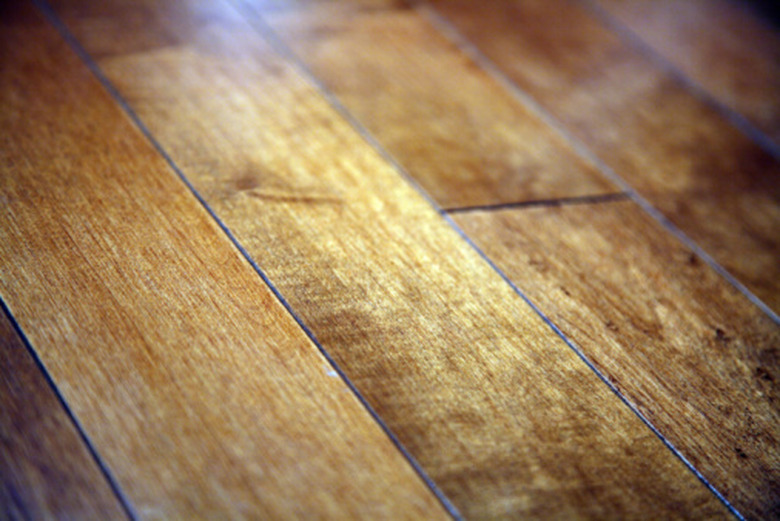How To Restore Hardwood Floors Without Sanding
Things Needed
-
Screening:
-
Broom or vacuum
-
Scraper
-
Floor buffer with medium- or fine-grit mesh screen
-
Lint-free cloth or pad
-
Mineral spirits
-
Varnish or clear coat
-
Paintbrush or paint roller
-
Chemical Restoration:
-
Broom or vacuum
-
Chemical stain stripper
-
Paintbrush or paint roller
-
Scraper
-
Varnish or stain
Wear a face mask to prevent breathing in dust. Cover all heating and air ducts to prevent dust from entering into your system.
Over time, hardwood floors can appear worn and dull and can make your entire room look shabby. Sanding is a common method used when refinishing floors, but it can cause excessive dust that lingers on furniture and other items throughout the home. There are alternative methods used when refinishing floors that also are easier. They are generally used on floors with less wear.
Tip
A strong maintenance routine is the key to the longevity and durability of your floors. Staying active with a daily maintenance routine is the first line of defense, but daily cleaning alone will not protect your floor's finish forever. A floor's finish will go through normal wear and tear over the years and will need attention. Revive, Restore or Refinish your floors to increase the longevity of your floors and protect your investment. Revive Restore or Refinish Your Hardwood Floors
Screening
Step 1
Remove everything from the room and sweep or vacuum the hardwood floor to remove any dirt or debris. Scrape off anything stuck to the floor, such as gum.
Step 2
Attach a medium- or fine-grit mesh screen to your buffer. Use a fine-grit screen on floors with light wear and a medium-grit screen on those with more damage.
Step 3
Place the buffer at the end of the room farthest from the door. Turn the buffer on and run it in a straight line in the direction of the wood grain, moving toward the door. Remove the mesh and flip it over as needed.
Step 4
Remove the screen and fold in half to manually buff areas, in corners and against the walls, where the buffer cannot reach.
Step 5
Vacuum the floor. Remove any remaining dust with a lint-free cloth or pad soaked with mineral spirits.
Step 6
Apply a layer of varnish or clear coat using a paintbrush or paint roller, starting again at the farthest end of the room and working your way toward the door. Allow the hardwood floor to completely dry before bringing the furniture back into the room.
Step 7
Repeat steps for remaining hardwood floors.
Chemical Restoration
Step 1
Remove everything from the room and sweep or vacuum the hardwood floor to remove any dirt or debris. Open all windows and doors.
Step 2
Apply an even coat of chemical stain stripper to the hardwood floor using a paintbrush or paint roller, starting at the farthest end of the room and working your way toward the door.
Step 3
Allow the chemicals to sit on the floor for at least two to three hours.
Step 4
Scrape the floors gently with a scraper to remove all of the old finish from the floors. Move in the direction of the wood grain to prevent damage.
Step 5
Allow the floor to dry overnight before reapplying varnish or stain.
Step 6
Apply the varnish or stain evenly using a paintbrush. Apply two coats for best results. Allow the hardwood floor to completely dry before bringing the furniture back into the room.
Step 7
Repeat steps for remaining hardwood floors.
